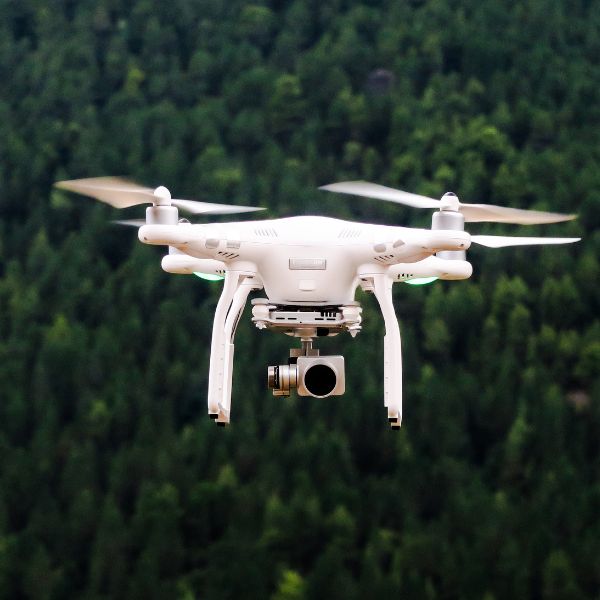Exploring the 6 Advantages of Drones in Power Line Inspections
Unlocking the 6 essential benefits of inspecting power lines with drones reveals how electric utility companies are revolutionizing the maintenance and monitoring of their infrastructure. These innovative drone inspections bring a plethora of advantages that significantly boost efficiency, accuracy, and safety.
Drones reduce accidents, speed up inspections, and slash operational costs for power line inspections.
1. Enhanced Safety and Accessibility
Reduction of Risk for Inspection Personnel

While traditional power line inspections involve sending personnel up in bucket trucks or helicopters, drone inspections can significantly reduce the risk to inspection personnel.
Using drones eliminates the need for workers to climb poles or navigate treacherous terrain, minimizing the likelihood of accidents and injuries.
Access to Remote and Challenging Locations
In addition to enhancing safety, drone inspections provide access to remote and challenging locations difficult for personnel to reach. The risk of injuries from falls or rugged terrain is greatly reduced as drones can navigate through tight spaces, fly over rough terrain, and access otherwise inaccessible areas.
2. Increased Efficiency and Reduced Downtime
Faster Inspection Times
Some key benefits of drone power line inspections include faster inspection times. On average, drones can complete inspections up to five times faster than traditional manual methods. This not only saves time but also allows for quicker identification of potential issues along the power lines.
Minimization of Power Outage Durations
Some key benefits of drone line inspections include minimizing power outage durations. Faster fault identification using drones means quicker response times for necessary repairs, resulting in reduced downtime for consumers and lower operational costs for utility companies.
Faster response times to identified issues can prevent widespread outages and help maintain a reliable power supply to customers. Utilizing drones for power line inspections, utility companies can proactively address problems and ensure minimal disruption to the electrical grid.
3. Improved Data Collection and Analysis
High-Quality Imaging Capabilities

Now, drones equipped with high-resolution cameras can capture clear and detailed images of power lines and transmission towers from various angles. This high-quality imaging capability enables inspectors to precisely identify potential issues, such as damaged equipment or vegetation encroachment.
Advanced-Data Processing Tools
Now, drones capture high-quality images and utilize advanced data processing tools to analyze the collected data efficiently. This streamlined process reduces human error and allows faster and more accurate detection of potential problems.
4. Cost-Effectiveness
Lower Operational Costs
Drone technology can significantly lower operational costs for your inspections. An efficient drone line inspection process can reduce the need for manual labor and heavy machinery, ultimately saving time and resources.
Reduced Need for Expensive Equipment
Operational costs can also be reduced due to the reduced need for expensive equipment. Drones eliminate the need for specialized equipment and vehicles, which can be costly to maintain and operate, providing a more cost-effective solution for inspecting power lines.
5. Environmental and Regulatory Compliance
Avoidance of Environmental Damage
Once again, drone power line inspections prove beneficial in ensuring environmental safety by minimizing the risk of damage to surrounding ecosystems.
Drones provide a non-invasive inspection method, reducing the need for heavy machinery and human intervention that can disrupt natural habitats. This technology helps utility companies identify and address potential issues without harming the environment.
6. Adaptability to Regulatory Requirements
Drones play a crucial role in helping utility companies adhere to strict regulatory standards set by government bodies. With real-time data collection and high-resolution imagery, drones can provide detailed and accurate information to ensure compliance with regulations.

By leveraging this technology, companies can easily demonstrate their commitment to regulatory requirements.
Regulatory bodies, such as the Federal Aviation Administration (FAA) in the United States, require utility companies to conduct regular inspections to ensure the safety and reliability of power lines.
Failure to comply with these regulations can result in fines and penalties. Using drone technology, companies can streamline inspection, meet regulatory standards, and avoid costly consequences.
Conclusion
Drone technology brings 6 essential benefits to utility companies’ power line inspections. These benefits make the job safer for workers, save money, speed up the inspection process, reach tough spots, improve data accuracy, and reduce downtime.
Embracing drone technology for power line inspections will streamline the process and enhance the overall efficiency and effectiveness of maintaining power infrastructure.

